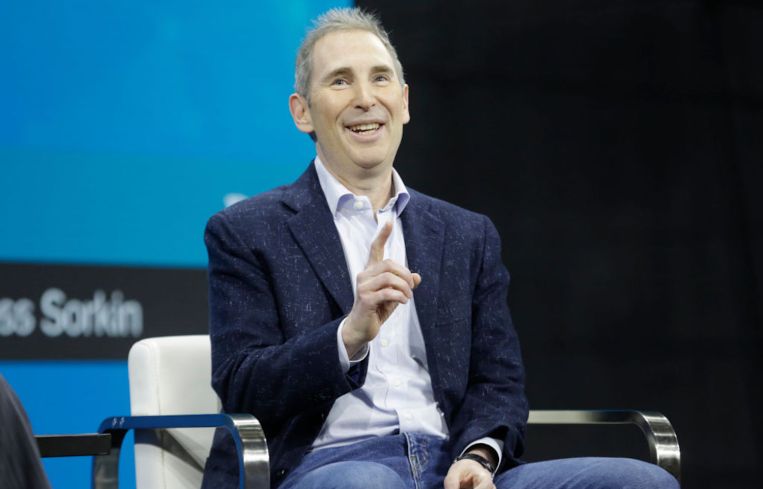Amazon Reports Q1 Revenue Gains Amid Post-Pandemic Retreat, HQ2 Pause
The e-commerce giant has pulled back on grocery rollout, office space and logistics network
By Chava Gourarie May 1, 2023 7:00 am
reprints
Amazon’s revenues have bounced back, even amid a broad post-pandemic pullback across many of the e-commerce giant’s businesses. The company reported $127.4 billion in revenue and 9 percent annual revenue growth in the first quarter, blowing past Wall Street forecasts.
The past year has seen Amazon lay off 27,000 corporate workers, restructure its warehouse footprint, delay construction of its second headquarters in Arlington, Va., and pause the rollout of Amazon Fresh stores. On the other hand, the company has continued to invest in its streaming businesses and Amazon Web Services, as well as new verticals like health care.
CEO Andy Jassy addressed the job cuts and “cost streamlining” in the company’s quarterly earnings call Thursday, highlighting its long-term strategy. “We’ll continue to evaluate what we’re seeing in our business and proceed adaptively,” he said.
Warehouses
In regard to warehouses, Amazon continued to scale back its logistics operations post-2022 while remaining the largest industrial tenant in the nation by far, with plenty in the pipeline. After doubling its logistics network during the pandemic surge, the company redesigned its logistics system into eight regional fulfillment neworks.
“We spent the last several months not only redesigning dozens of processes to drive better productivity but also re-architecting our placement approach and larger fulfillment center footprint to move from a national fulfillment network in the U.S. to a regional one,” Jassy said.
Grocery
During the first quarter, Amazon revealed it would be pausing or scaling back its grocery operations as it sought to settle on a strategy. The company has over 500 Whole Foods stores in the United States, and around 75 operational Amazon Fresh and Amazon Go locations combined.
It appears that the corporation’s grocery strategy is still in limbo. “We wish we were further along at this point,” Jassy said in answer to a question on the subject. “We’ve tried lots of ideas. We haven’t yet found conviction around the format that we want to go expand much more broadly.”
In the Washington, D.C., area, one of the first to see an Amazon Fresh store, there are at least eight planned stores whose status is now unclear, including one in Downtown D.C., and another in the Navy Yard, both of which had active alcohol licenses as of February but no opening date. Amazon has not confirmed what it has planned for Amazon Fresh stores in the pipeline.
HQ2
Amazon pressed pause on the construction of PenPlace, the second phase of its HQ2 in Arlington, Va., during the first quarter, largely in reaction to the remote work shift. The first phase on the other hand is almost complete, and the company plans to begin moving employees starting in June. Still, the pause is a fairly large blow to the region, which was relying on Amazon’s substantial workforce and expansive campus to stimulate the economy once it was completed. Amazon did not address the status of the construction during the call, or hint when it might resume.
The company has also retreated from office space elsewhere, including disposing at a loss in January of a Bay Area office building it purchased in 2021. The vast layoffs also hint at a smaller footprint, though that is mostly speculation.
AWS
Amazon’s hosting services make up a tremendous part of the company’s profits, and it continues to be one of the largest players in the space, both physically and in capacity. AWS operates over 125 data centers globally, occupying 26 million square feet.
The company is also attempting to jump on the ChatGPT train that has taken laypeople by storm over the last several months — and announced the launching of CodeWhisperer, a tool built on ChatGPT that can create code-based projects based on spoken commands.
“If you think about how much more productive a developer is going to be and what they’re going to spend their time on instead of rewriting code that … takes time, I think it’s a big deal,” Jassy said.
Good thing it also requires lots of cloud space.
Studios
Jassy did not comment directly on Amazon Studios either, though layoffs hit the Culver City-based division Thursday, with around 100 workers let go. Still, the production division has received considerable attention even amid the latest economic uncertainty, with $16.6 billion invested in 2022, not counting its $8.5 billion purchase of MGM — making it one of the larger occupiers of studio space in the Los Angeles area.
Chava Gourarie can be reached at cgourarie@commercialobserver.com.


